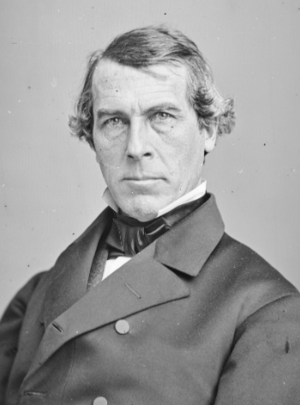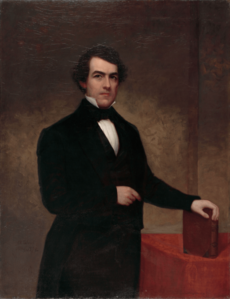Washington Hunt facts for kids
Quick facts for kids
Washington Hunt
|
|
|---|---|
 |
|
| 17th Governor of New York | |
| In office January 1, 1851 – December 31, 1852 |
|
| Lieutenant | Sanford E. Church |
| Preceded by | Hamilton Fish |
| Succeeded by | Horatio Seymour |
| 14th New York State Comptroller | |
| In office February 20, 1849 – December 18, 1850 |
|
| Governor | Hamilton Fish |
| Preceded by | Millard Fillmore |
| Succeeded by | Philo C. Fuller |
| Member of the U.S. House of Representatives from New York's 34th district |
|
| In office March 4, 1843 – March 3, 1849 |
|
| Preceded by | District created |
| Succeeded by | Lorenzo Burrows |
| Personal details | |
| Born | August 5, 1811 Windham, New York, U.S |
| Died | February 2, 1867 (aged 55) New York City, New York, US |
| Political party | Whig |
| Profession | Politician, Lawyer, Judge |
Washington Hunt (born August 5, 1811 – died February 2, 1867) was an important American lawyer and politician. He served as the 17th Governor of New York from 1851 to 1852. He was also a U.S. Congressman and the New York State Comptroller.
Contents
Washington Hunt's Life and Career
Washington Hunt was born in Windham, New York. When he was 17, in 1828, he moved to Lockport, New York. There, he began studying law.
Early Law Career
Hunt became a lawyer in 1834. The next year, in 1835, he opened his own law office on Market Street. From 1836 to 1841, he served as the First Judge of the Niagara County Court. This was an important role in the local legal system.
Becoming a Politician
Hunt was a member of the Whig Party. He was elected to the U.S. House of Representatives three times. He served in Congress from March 4, 1843, to March 3, 1849.
After his time in Congress, he was chosen to be the New York State Comptroller. He took this job after Millard Fillmore resigned to become the U.S. Vice President. Hunt was re-elected as Comptroller in November 1849. However, he resigned from this role when he was elected Governor of New York the following year.
Governor of New York
Washington Hunt served as the Governor of New York from 1851 to 1852. He tried to be re-elected for a second term, but he lost to Horatio Seymour.
Later Political Life
After the Whig Party broke apart, Hunt did not join the new Republican Party. He was a more traditional Whig. In 1856, he led the Whig National Convention. He supported former President Millard Fillmore for president that year.
In 1860, Hunt joined the Constitutional Union Party. He supported their candidate for president, John Bell. When it seemed Bell could not win in New York, Hunt helped form a combined ticket with supporters of Democrat Stephen A. Douglas.
In his final years, Hunt moved closer to the Democratic Party. He supported his former opponent, Horatio Seymour, for Governor of New York in 1862. He also supported George B. McClellan for president in 1864.
After the Civil War, Hunt supported President Andrew Johnson. He was part of Johnson's "National Union" movement. This movement tried to bring Democrats and conservative Republicans together into a new party. Hunt attended the 1866 National Union Convention in 1866.
Family and Legacy
Washington Hunt's brother was Major Edward B. Hunt. Edward was a graduate of West Point. Sadly, he died in October 1863 while working with a new experimental weapon.
Washington Hunt was buried at Glenwood Cemetery in Lockport. His old home in Lockport, at 363 Market Street, is now part of the Lowertown Historic District.


